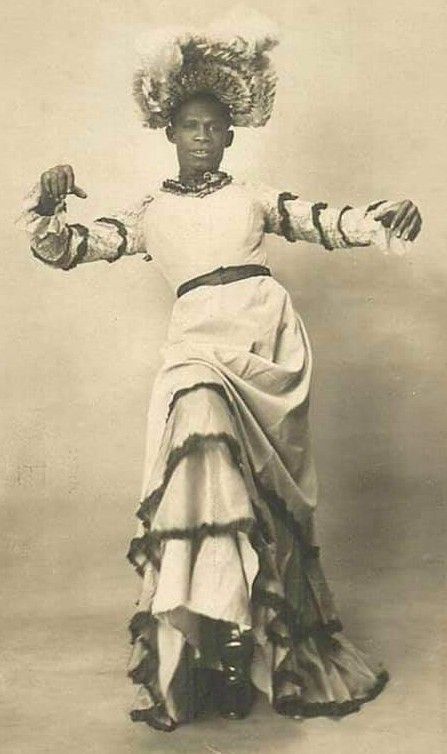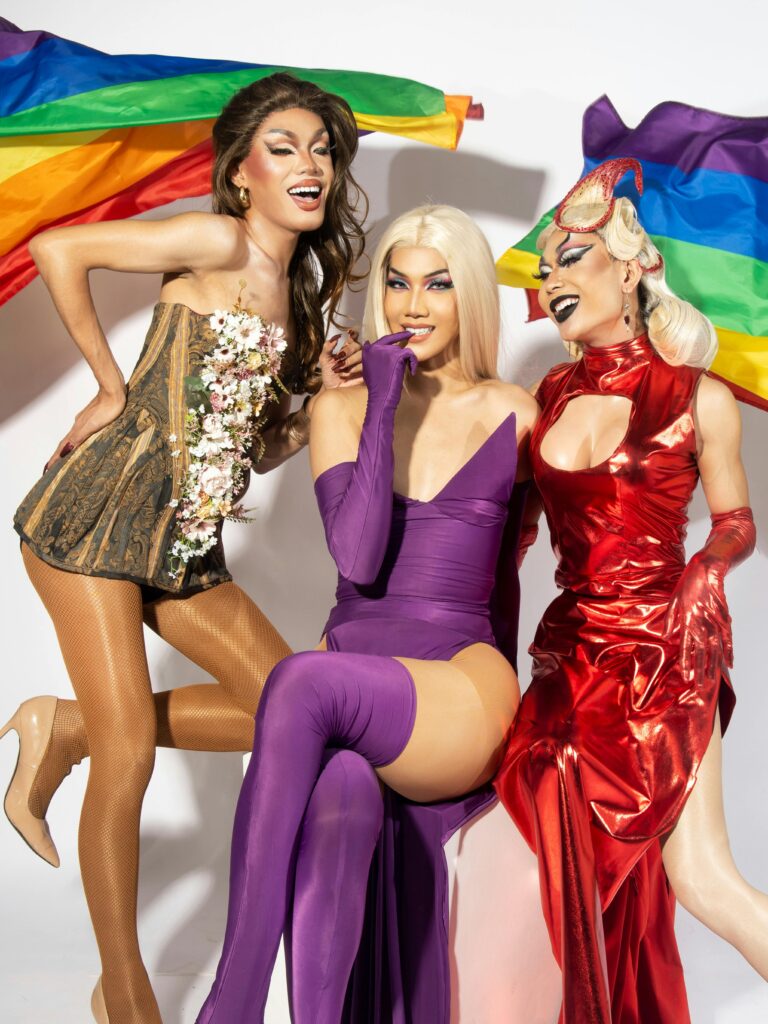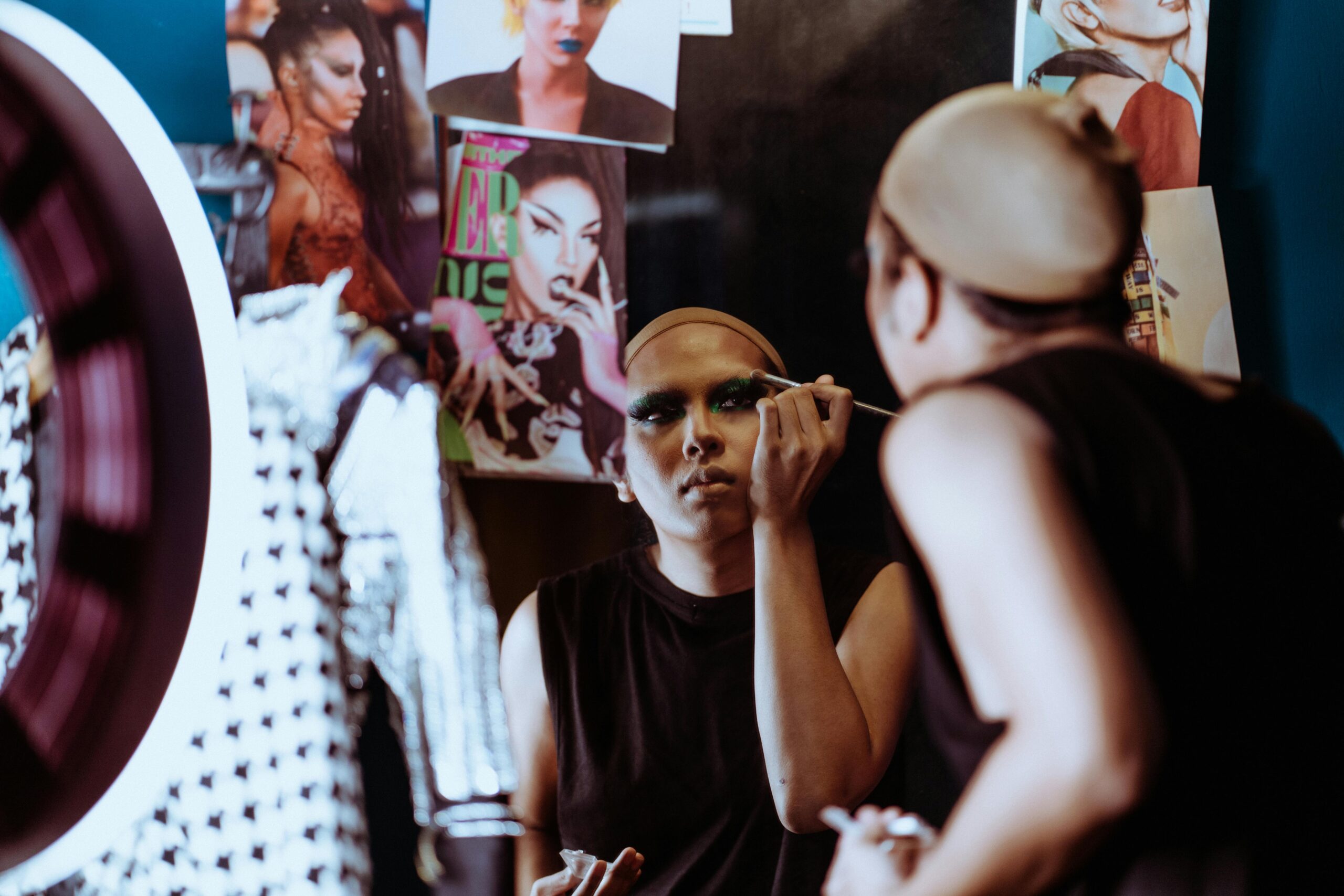History of Modern Drag is a story of rebellion, artistry, and survival. Long before drag queens were celebrated on television shows and music stages, drag was a daring act of defiance. The performers who shaped drag culture risked arrest, ridicule, and even violence to express themselves — and in the process, they built one of the most vibrant art forms of modern times.
Ancient and Theatrical Beginnings
Although many trace the history of modern drag to the late 19th century, the practice of men playing female roles dates back much further. In ancient Greece and Rome, women were not allowed to perform on stage, so men would play female characters in dramas and comedies. This early tradition carried on into Elizabethan England, where even William Shakespeare wrote gender-bending plotlines that relied on cross-dressing characters to drive the story.
Similar practices existed outside the West as well. In Japan, kabuki theater featured onnagata — male actors trained to play female roles with great skill — while Peking opera in China had its own celebrated male impersonators. These early examples show that drag, in its most basic form, has always been part of the human storytelling tradition.
The Birth of “Drag” and 19th-Century Culture
The word “drag” is believed to have originated in Victorian England. Ernest Boulton, part of the famous cross-dressing duo Boulton and Park, described their flamboyant performances as “drag,” referencing how their dresses would drag along the floor. This linguistic moment marked the beginning of the term’s association with gender performance.
Across the Atlantic, drag took root in a different, more complicated context. Female impersonators became popular in minstrel and vaudeville shows, where white actors — often in blackface — performed exaggerated stereotypes of African Americans. Over time, female impersonators shifted from parody to glamour, creating sophisticated and convincing portrayals of women that captivated audiences.
Drag Balls and the First “Queen of Drag”
While popular theater featured drag as entertainment, a much more radical drag scene was emerging underground. In the late 1800s, Black and Latino performers began hosting clandestine drag balls in New York City and Washington, D.C. These were not just performances but safe havens for LGBTQ individuals at a time when expressing queer identity was criminalized.

At the center of this movement was William Dorsey Swann, born enslaved in Maryland in 1858. Swann organized secret drag balls as early as 1882 and is considered the first person to call himself a “queen of drag.” His events were frequently raided by police, and Swann himself was arrested multiple times. Despite this persecution, he became one of the earliest activists to fight for LGBTQ rights — even writing to President Grover Cleveland in 1896 to request a pardon, which was denied.
The Harlem Renaissance and Ballroom Culture
The history of modern drag truly accelerated during the Harlem Renaissance of the 1920s and 1930s. Harlem became the epicenter of drag balls, which were often extravagant events where performers competed in categories of fashion, dance, and theatricality. These balls were inclusive spaces that celebrated creativity and self-expression, laying the foundation for today’s ballroom culture.
Writers like Langston Hughes documented these events, giving future generations insight into their importance. Harlem’s ballroom scene became a blueprint for queer community-building and resistance, offering LGBTQ people a space to express gender fluidity long before mainstream acceptance.
Drag in the Mid-20th Century
As drag culture grew, it also faced renewed challenges. The mid-20th century saw an increase in police raids and criminalization of LGBTQ spaces. Nevertheless, drag thrived in underground clubs and cabarets. Icons like Julian Eltinge in film, and later Divine in the 1970s, kept drag visible in popular culture — even if it was still considered taboo.
Mainstream Breakthrough: RuPaul and Pop Culture
The 1990 documentary Paris Is Burning brought the Harlem ballroom scene to mainstream audiences, highlighting voguing, drag houses, and the language of the ball culture. Soon after, Madonna’s hit song “Vogue” made voguing a global phenomenon.

The biggest shift came with RuPaul Andre Charles, whose 1993 hit song Supermodel (You Better Work) made him a household name. Years later, his Emmy-winning show RuPaul’s Drag Race turned drag into a global phenomenon, giving rise to international spinoffs and making drag queens into mainstream celebrities.
The Legacy of Modern Drag
Today, drag is celebrated worldwide, from Pride parades to Netflix specials. But the history of modern drag reminds us that this art form was born out of resistance. Modern drag queens and kings carry the legacy of pioneers like William Dorsey Swann, Harlem’s ball performers, and the countless unnamed individuals who risked their freedom to create spaces for queer expression.
Drag is no longer hidden — it’s a cultural force influencing music, fashion, and language. Terms like “shade,” “slay,” and “yas queen” have entered everyday speech, proving that what started as a secretive rebellion has reshaped global pop culture.
Source: National Geographic


